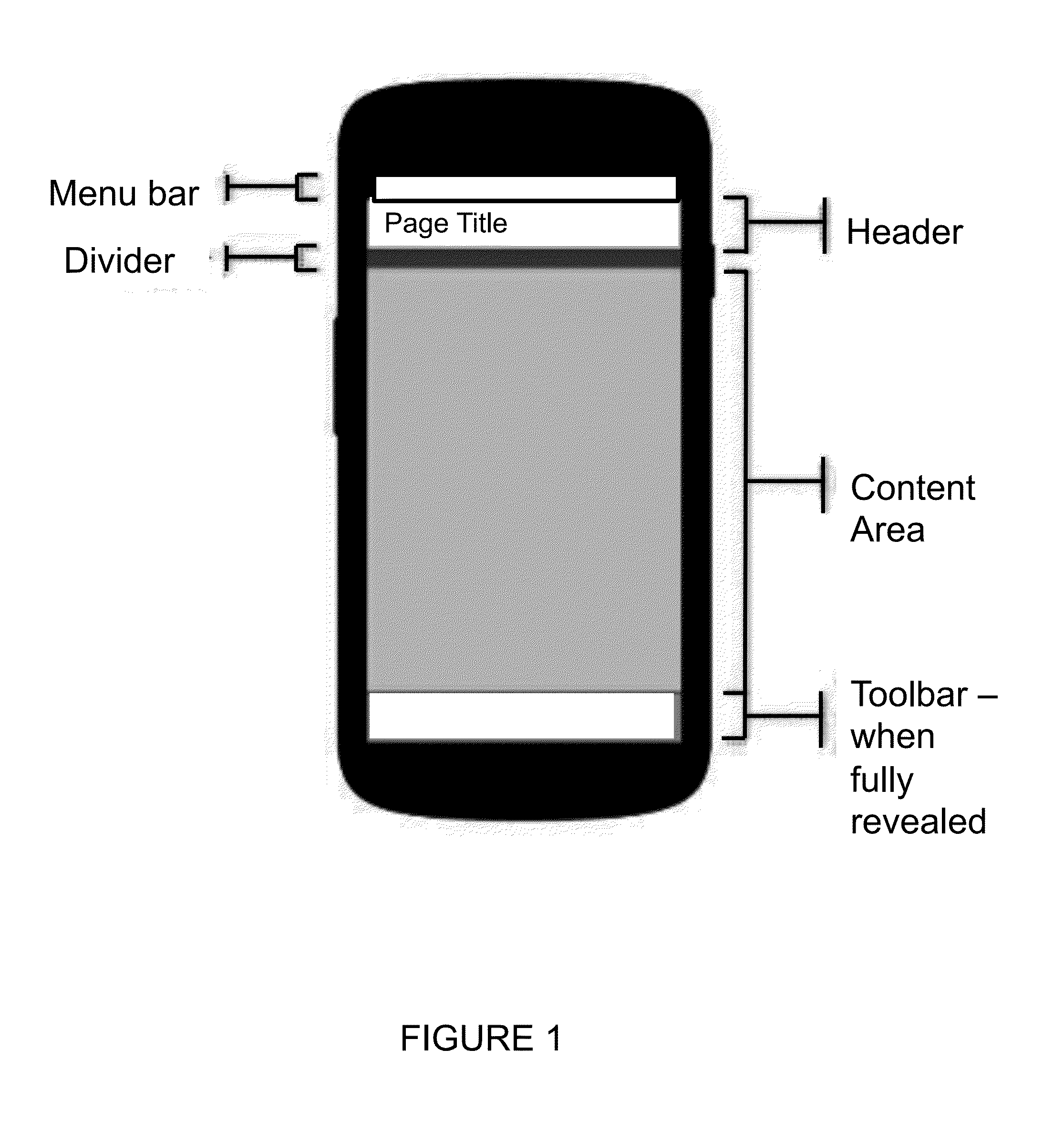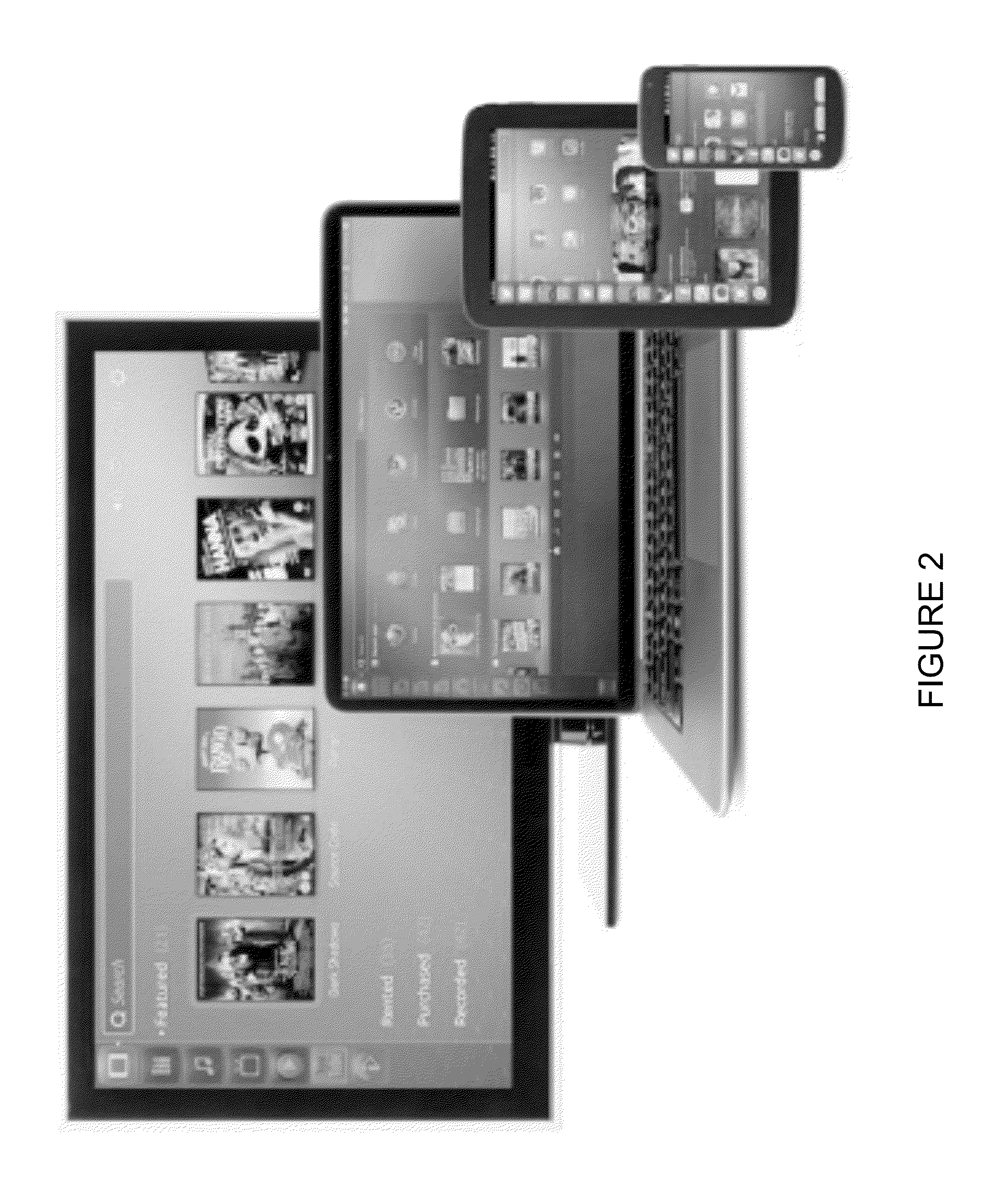User interface for a computing device
a computing device and user interface technology, applied in computing, substation equipment, instruments, etc., can solve the problems of slow and riskier design process of these types of devices, difficult for developers to write applications for each of the devices, and difficult for users to transition, so as to achieve rapid access to features or functions or control.
- Summary
- Abstract
- Description
- Claims
- Application Information
AI Technical Summary
Benefits of technology
Problems solved by technology
Method used
Image
Examples
Embodiment Construction
[0100]One implementation of the invention is Ubuntu touch. This section describes in more detail Ubuntu Touch.
A.1 ‘Edge Gestures’
[0101]In Ubuntu, a swipe in from an edge causes the device to behave (e.g. display a user interface (UI) graphic or object or objects, open an app, open a control pane, invoke a function etc.), in a way that depends on the specific edge swiped-in from (e.g. left, right, top or bottom). The richness and intuitive simplicity of edge swipe behaviours in Ubuntu is a key element. Ubuntu uses many different gestures—where a gesture is a single touch-based interaction with the device touch screen.
[0102]One can re-cast this feature in terms of a problem and its solution. The Problem Statement is: how can you design a device interface that maximises the space on the screen available for content and applications?
[0103]Ubuntu ‘edge gestures’ illustrate many related solutions to this problem. For example, in Ubuntu, you swipe from the right edge to take you back to th...
PUM
 Login to View More
Login to View More Abstract
Description
Claims
Application Information
 Login to View More
Login to View More - R&D
- Intellectual Property
- Life Sciences
- Materials
- Tech Scout
- Unparalleled Data Quality
- Higher Quality Content
- 60% Fewer Hallucinations
Browse by: Latest US Patents, China's latest patents, Technical Efficacy Thesaurus, Application Domain, Technology Topic, Popular Technical Reports.
© 2025 PatSnap. All rights reserved.Legal|Privacy policy|Modern Slavery Act Transparency Statement|Sitemap|About US| Contact US: help@patsnap.com



